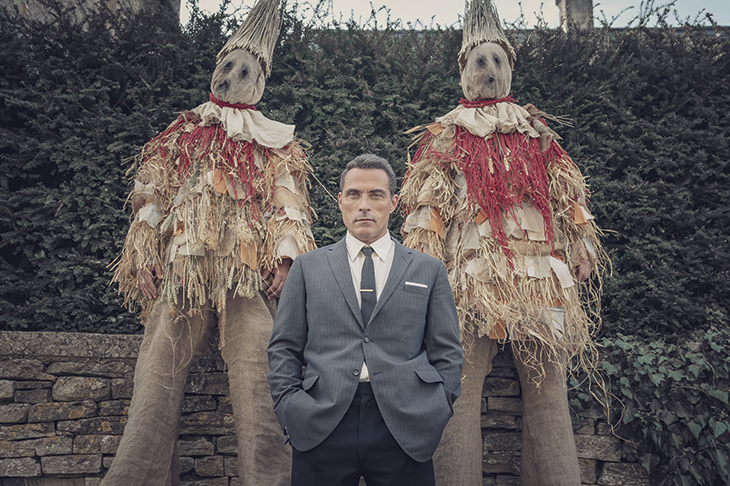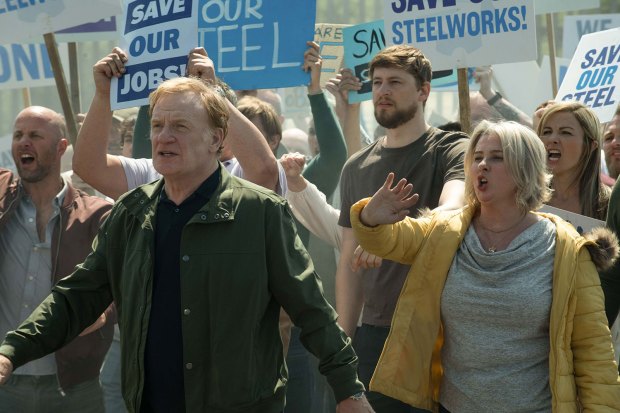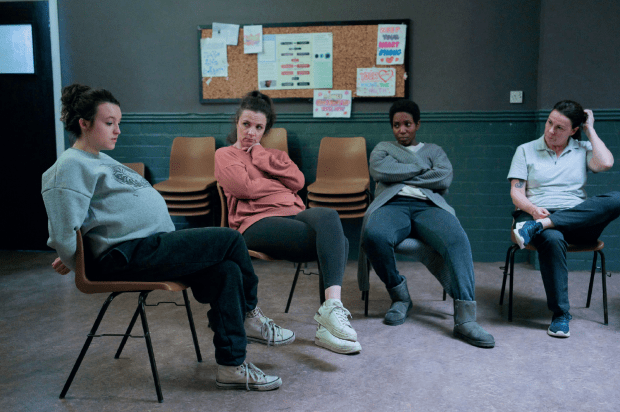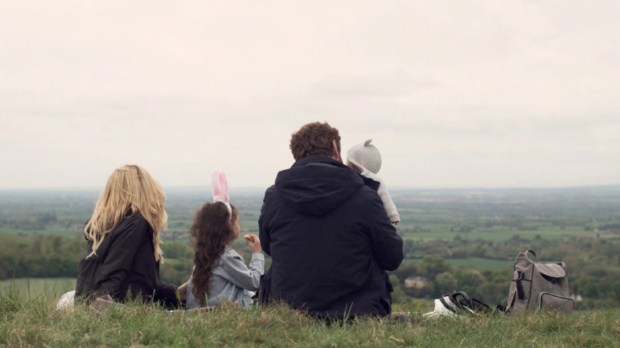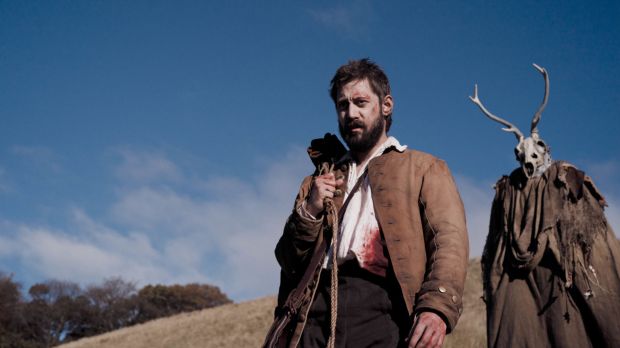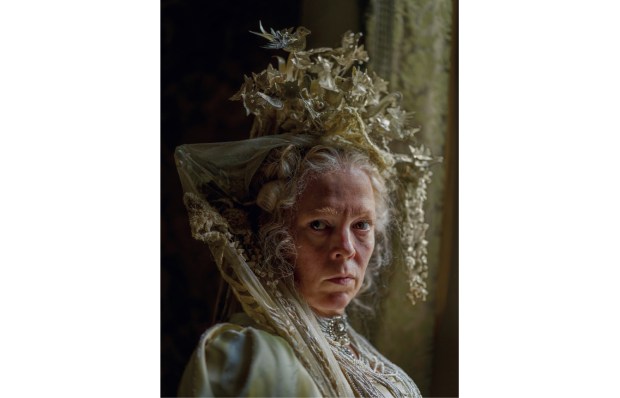Not much was clear in the opening scenes of The Pale Horse (BBC1, Sunday), which even by current TV standards were admirably committed to confusing us with a series of baffling fragments. One thing that did seem apparent, though, was that Mark Easterbrook (Rufus Sewell) wasn’t having much luck with the ladies. In one fragment, he cradled the corpse of his new wife who’d just electrocuted herself in the bath. A few fragments later — some of them featuring an old woman lying in bed with her hair falling out — he woke up in a Soho starlet’s flat to find a rat dead in the sink and the starlet dead in the bed.
By then, mind you, he’d already married again: this time to a woman who on the face of it is a perfect early-1960s wife, her clothes, hair and vol-au-vents all immaculate. Nonetheless, her tendency to scream loudly and attack the upholstery with a bread knife when she’s alone suggests that a certain brittleness may lurk beneath.
And Mark’s troubles don’t end there. Shortly after the starlet’s death, the balding old woman was found dead too, and in her shoe was a list of names that contained his — and if most of the people on it hadn’t died already, they soon would. While the deaths appeared to be natural, the coincidence was too much for both the enigmatic Inspector Lejeune (a nicely understated performance by Sean Pertwee) and the even more enigmatic Zachariah Osborne (a weirdly hammy performance by Bertie Carvel). Unlike everybody else — including the viewers — Osborne thinks he knows what’s going on: namely that three witches in the Surrey village of Much Deeping are summoning demons to kill people to order.
As a man of science as well as means, Mark was naturally unconvinced. But his worldview took a hefty knock when he popped into the Much Deeping Lammas Fair. Amid some distinctly Wicker Man goings-on, he met the witches in question, and discovered that they were alarmingly well informed about his first wife’s death.
The Pale Horse is the latest Agatha Christie adaptation by the prolific Sarah Phelps and, as ever, she plays fast and loose with the plot. Nonetheless, she does remain true to the book’s atypical taste for gothic horror. The same applies to the unashamedly stylised direction, which does a fine job of ensuring that all the scenes, even the ones about making vol-au-vents, are profoundly sinister. Meanwhile, Rufus Sewell is so inscrutable that we still haven’t got a clue whether Mark is a goodie or baddie.
In other hands, such relentless solemnity might end up feeling a bit silly. Here, the decision to play it utterly straight — with not the slightest twinkle permitted to appear in the programme’s eye — is proving something of a triumph. The Pale Horse is becoming not only increasingly gripping but also, in its admittedly odd way, rather good fun.
The same definitely can’t be said of The End (Sky Atlantic, Monday), whose first episode must be one of the bleakest openers of recent times. Afterwards, there was the customary announcement for those ‘affected by any of the issues’ in the programme — but in this case there were quite a lot to choose from.
The episode began as it meant to go on: with elderly Edie (Harriet Walter) lying on her bed, a plastic bag taped over her face as her cottage caught fire around her. Abandoning, or perhaps refining, her suicide attempt, she then removed the bag and jumped out of the window. Somehow still alive, she was next seen arriving in Australia to be looked after by her long-suffering daughter Kate (Frances O’Connor), whose husband is in jail for fraud, whose teenage daughter Titania is transitioning into her teenage son Oberon and whose job is as a palliative doctor, so that the subplots generally concern people begging her to be allowed to die.
Installed, although not gratefully, in a posh retirement village, Edie continued to threaten suicide and to guzzle gin (usually from the bottle). To her grandchildren, grandma wants to die ‘so she can be with grandpa’. But before long, even this idea — in the circumstances an almost consoling indication of happier times — was stripped away. After her husband’s death, it transpired, Edie had learned from his diary that he’d been a serial philanderer, and she now can’t bear to live knowing she wasted her entire life on him. The programme ended with her alternately screaming and swigging in the shower with her mastectomy scars on full display.
Despite all this, the really bad news is that The End is so brilliantly done that I suspect anybody who saw it on Monday will have been completely drawn in. I can’t say I’m looking forward to the remaining episodes, exactly — but I fear I’m pretty much stuck watching them.
Got something to add? Join the discussion and comment below.
Get 10 issues for just $10
Subscribe to The Spectator Australia today for the next 10 magazine issues, plus full online access, for just $10.
You might disagree with half of it, but you’ll enjoy reading all of it. Try your first month for free, then just $2 a week for the remainder of your first year.

